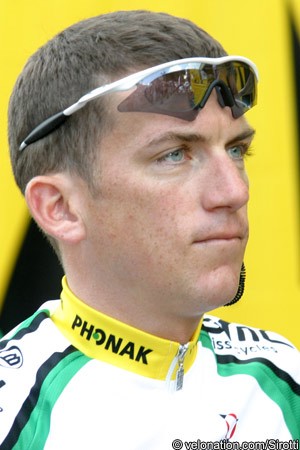Account of time, and doping, on US Postal Service team
 While Lance Armstrong had hoped that things would quieten down once initial reports that he would not fight the US Anti-Doping Agency’s case against him had been published, stories about alleged doping offences on his US Postal Service team have continued to appear.
While Lance Armstrong had hoped that things would quieten down once initial reports that he would not fight the US Anti-Doping Agency’s case against him had been published, stories about alleged doping offences on his US Postal Service team have continued to appear.
Widely-varying opinion pieces have been written about his battle with the agency, with some respected mainstream writers saying that his decision was tantamount to a guilty admission, while others claim either that USADA has an unfair political motive or that his LiveStrong work means it doesn’t matter if he lied about doping.
However the main thrust of the new headlines concern two subjects; former team-mate Tyler Hamilton’s tell-all account of his career and his time at the US Postal Service, CSC and Phonak teams, and also Armstrong’s former fiancée Sheryl Crow.
According to the New York Daily News, the latter was interviewed by federal agents towards the end of last year as part of their now-suspended investigation into the rider.
Their relationship became public after Armstrong’s marriage came to an end in 2003. Grammy award winning musician Crow accompanied Armstrong to races such as the Tour de France and also stayed with him at his apartment in Girona, meeting the now-banned doctor Michele Ferrari and others.
As the Daily News points out, former teammates Floyd Landis and Tyler Hamilton said that Armstrong had both blood bags and banned products in the apartment, and that he also transported these on his private jet. Crow travelled with him on the plane.
The newspaper states that Crow ‘provided information’ to federal investigators when they questioned her last year.
Jay Cooper, an attorney who advised Crow in relation to her cooperation with the investigation told the Daily News that he would not give details. “I’m not going to comment one way or the other,” he sated.
As regards Hamilton, the rider who was part of the Postal team setup between 1995 (when it was called Montgomery-Bell) and 2001 has written a book about his time in the peloton. Called The Secret Race, it details what he said was extensive doping on the squad, with both his own PED usage and that of others discussed.
Hamilton tested positive in 2004, incurring a two year ban as a result. He denied doping use for many years, but last year opened up about the issue and also implicated Armstrong.
News articles and reviews about the book have listed various claims, including one that Armstrong supplied him with a vial of EPO at his-then home in Nice in 1999. He also writes that the two riders took transfusions together after the 11th stage of the 2000 race, and that George Hincapie, Kevin Livingston and others also took banned substances during their time with the team.
“To Lance’s way of thinking, doping is a fact of life, like oxygen or gravity,” he wrote.
Hamilton repeats his previous assertion that Amstrong was shielded by the UCI over a positive test for EPO in the 2001 Tour de Suisse.
“You won’t fucking believe this,” he quotes Armstrong, recounting a conversation he says he had with him. “I got popped for EPO.” Last year Hamilton echoes Floyd Landis’ statement that the UCI set up a meeting between the lab’s director, the rider and team director Johan Bruyneel, and that the matter went no further.
“Sometime after that, I remember Lance phoning Hein Verbruggen from the team bus,” he writes of the Dutchman who was UCI President at the time.
“I was struck by the casual tone of the conversation. Lance was talking to the president of the UCI, the leader of the sport. But he may as well have been talking to a business partner, a friend.”
Verbruggen and the current UCI president Pat McQuaid have denied any improper actions in relation to Armstrong. The UCI last month told USADA that it could not proceed with its arbitration unless it provided evidence which proved it had jurisdiction.
WADA said it was satisfied that USADA was correct in its action under the WADA Code and its director general David Howman reacted strongly.
“By adopting its current position UCI is sadly destroying the credibility it has slowly been regaining in the past years in the fight against doping,” he warned in a letter sent to McQuaid last month.
Both WADA and the UCI have requested details of USADA’s reason to impose a lifetime ban on Armstrong and to strip him of his results from August 1st 1998. Referred to as a ‘reasoned decision,’ this is expected to be provided sometime this month, with extensive evidence likely to be part of the dossier.
BBC reported this week that the UCI has received numerous approaches by lawyers seeking to work on the case, and that there are indications that it may be already planning to fight the sanctions before the Court of Arbitration for Sport.
USADA maintains it has a very strong case, and states that evidence will be made public. In the meantime, Hamilton’s book details and Crow’s questioning keep the topic centre stage.